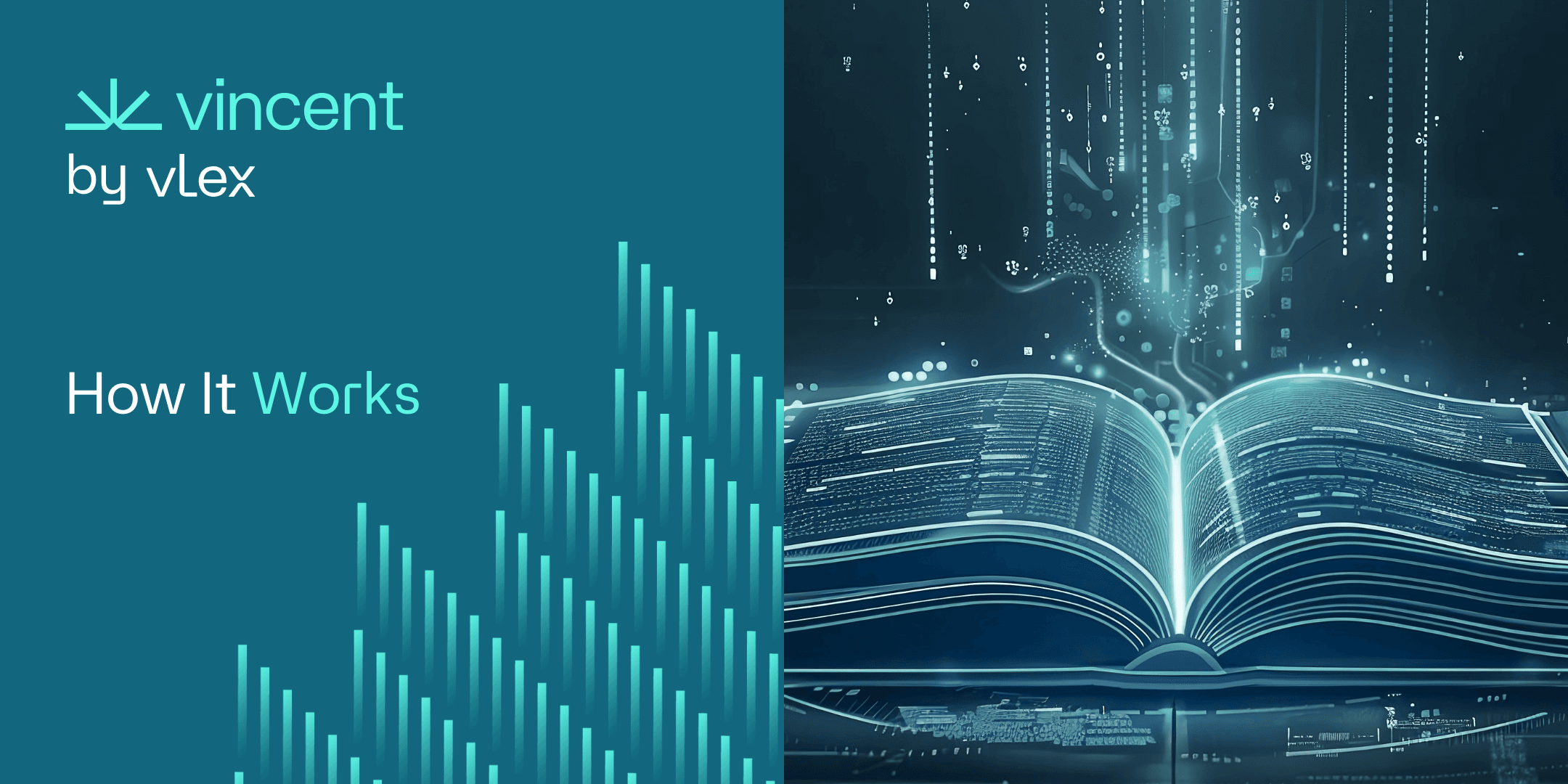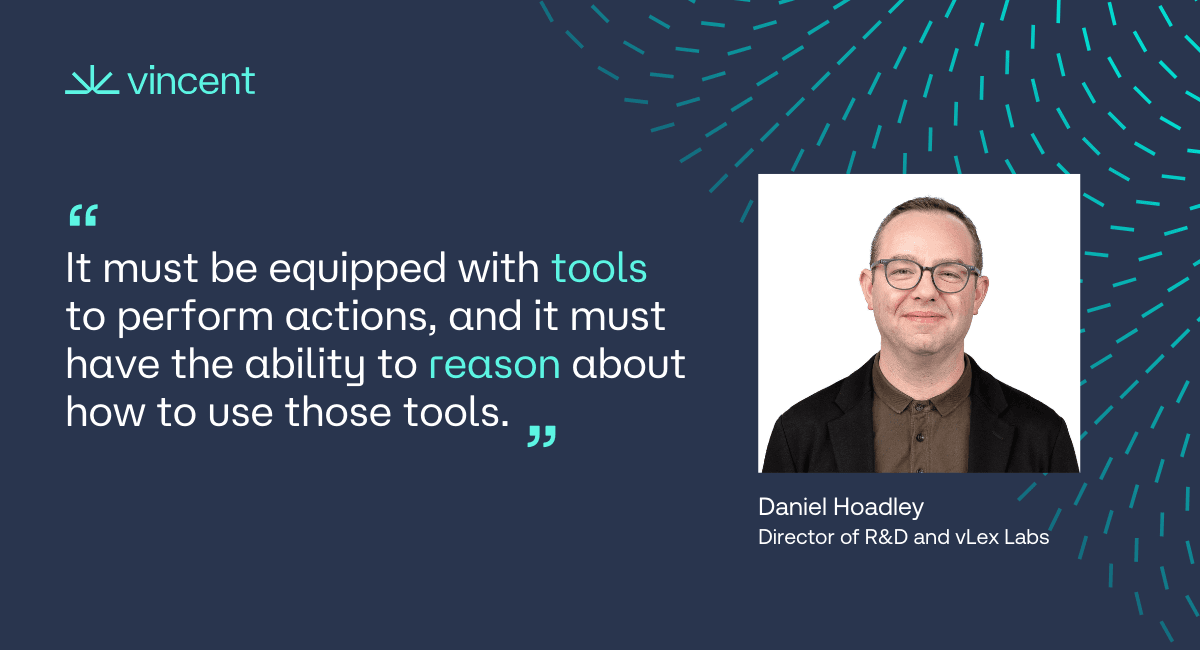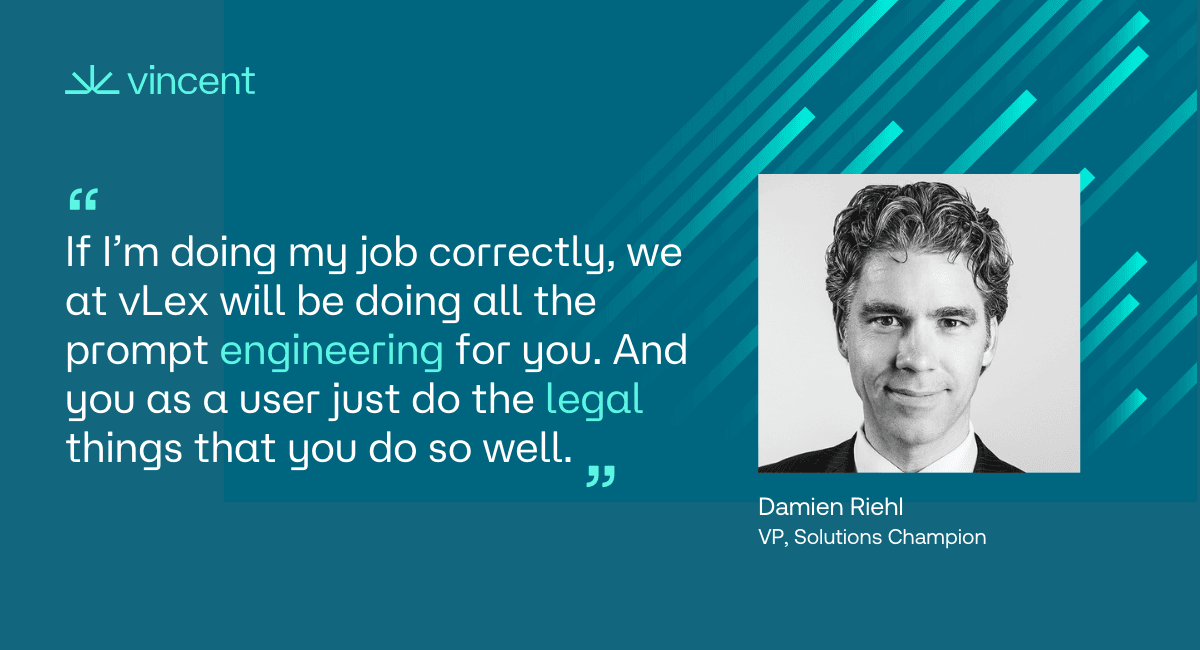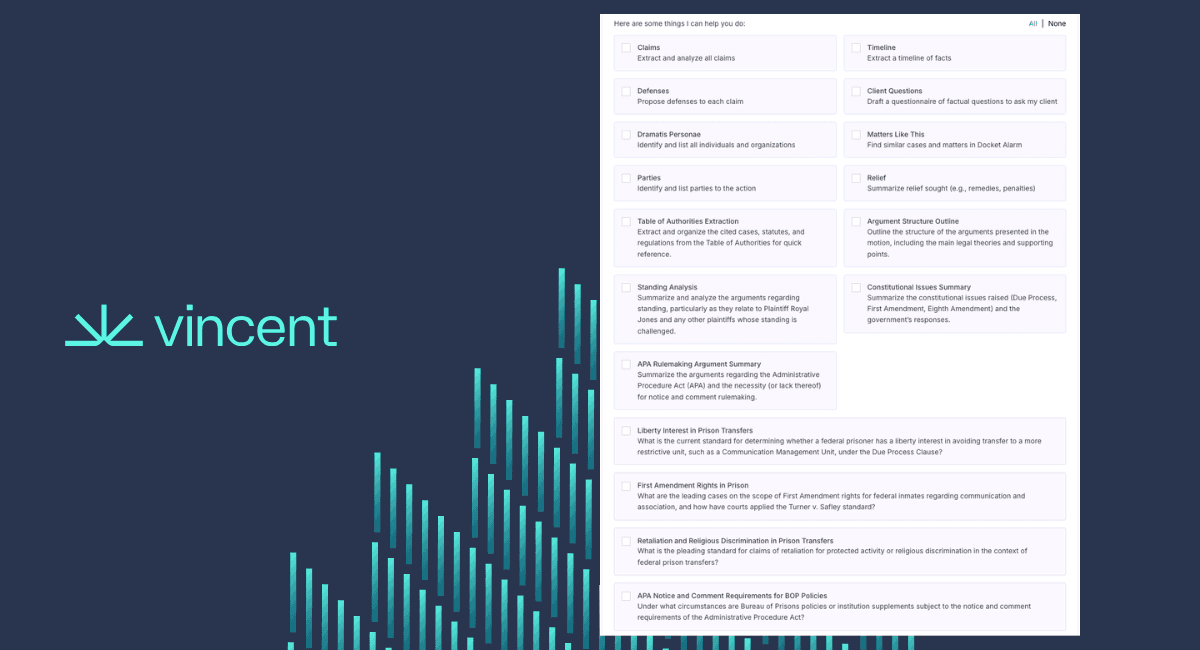How It Works: Agentic AI
ABA Rule 1.1 requires lawyers to understand relevant technology. Learn how agentic AI differs from traditional legal AI platforms and why Vincent’s multi-step reasoning capabilities represent the future of legal research and workflow automation for modern law firms.

When you tell your AI assistant, “Help me understand this contract,” traditional artificial intelligence would respond with generic contract advice or ask you to be more specific. But what if AI could read your specific contract, identify the governing law, research relevant precedents, and flag unusual clauses—all from that single request?
This capability exists today through agentic AI, and it’s becoming increasingly important for legal professionals. Under ABA Model Rule 1.1, lawyers must maintain competence, including comprehending “the benefits and risks associated with relevant technology.” As AI becomes essential to competitive legal practice, understanding how these advanced systems work will help you make informed decisions about which platforms truly enhance your capabilities.
In our first article in the How It Works series on The Different Types of Legal AI, we explored the foundational AI concepts every lawyer should understand. Now, we’re diving deeper into one of AI’s most sophisticated developments: agentic AI and how it’s changing what’s possible in legal practice.
What Makes AI "Agentic"
The technology industry hasn’t reached a concrete consensus yet on how to define “agentic AI,” but there are key characteristics we can identify. As vLex’s Head of R&D and vLex Labs, Daniel Hoadley, explains, agentic AI must have two essential qualities: “It must be equipped with tools to perform actions, and it must have the ability to reason about how to use those tools.”
Think of it like this: Traditional AI is like a smart intern who follows exact instructions. You need to tell them precisely what to do, step by step. “First, read this contract. Then, identify the governing law clause. Next, look up the relevant statutes. After that, compare these terms to market standards.” Miss a step, and they’re stuck.
Agentic AI is like having an experienced paralegal who can break down complex tasks and choose the right approach. You can say, “Analyze this contract and tell me what I need to know,” and they’ll figure out all the necessary steps themselves. They’ll determine what type of contract it is, what jurisdiction applies, what research needs to be done, what analysis would be most helpful, and then perform the tasks for you—all with minimal guidance.
The key difference is dynamic decision-making and multi-step reasoning. Where traditional AI performs single tasks, agentic AI handles complex, multi-step processes by dynamically choosing which tools to use and in what sequence.

The Right AI for the Right Task
Most sophisticated legal AI platforms use different types of AI depending on what needs to be accomplished. Traditional AI excels at specific, well-defined tasks like document summarization, clause extraction, or answering straightforward legal questions. These applications are efficient, cost-effective, and perfectly suited for routine work.
Agentic AI shines when tackling complex, multi-layered legal challenges that require judgment about what to do next. The most advanced platforms combine both approaches strategically—using traditional AI for quick, routine tasks and deploying agentic AI when complex reasoning is required.
The challenge with many legal AI tools is that they require lawyers to proactively manage the AI’s workflow. You become responsible for breaking down complex legal analysis into AI-digestible pieces, then reassembling the results into something useful. This creates unnecessary delays in managing your workflows when more advanced capabilities now exist.
One area where this limitation becomes particularly frustrating is prompt engineering—the art of crafting precise instructions to get useful results from AI. As Damien Riehl, vLex’s VP, Solutions Champion, explains: “If I’m doing my job correctly, we at vLex will be doing all the prompt engineering for you. And you as a user just do the legal things that you do so well.” The best AI platforms handle the complexity behind the scenes, letting you focus on practicing law.

How Vincent Uses Agentic AI
Vincent incorporates agentic AI in several ways throughout the platform. While not every workflow uses agentic AI—many features use more time-efficient AI methods—Vincent strategically deploys agentic capabilities where they provide the most value.
Document Analysis and Tool Selection: When you upload any document to Vincent’s main interface, the system analyzes what you’ve provided and automatically suggests the most relevant tools and workflows. Upload a contract, and Vincent recognizes what type of document it is and offers contract-specific analysis options. Upload a complaint, and it suggests litigation-focused options. This happens without you needing to navigate through menus or choose the right workflow—Vincent figures out how to best help based on your document.
Intelligent Task Generation: Beyond suggesting standard workflows, Vincent uses agentic AI to generate custom tasks based on your specific document. These aren’t responses pre-programmed by vLex engineers, but dynamic suggestions where Vincent analyzes your content and proposes additional ways it can assist with that particular legal matter.
Research Question Development: Vincent examines uploaded documents and generates relevant research questions based on the legal concepts and issues present in your materials. Rather than you having to identify what research might be helpful, Vincent proactively suggests specific legal questions worth investigating.
Adaptive Analysis: In features like the Tables workflow, Vincent takes your general, plain language description of what you want to analyze and determines the most useful questions to ask across your document set. You describe your goal, and Vincent figures out the analytical framework to accomplish it.
This represents a fundamental shift from AI that does what you tell it to do, to AI that understands what you’re trying to accomplish and figures out how to help.
A Real Example: Document Upload Intelligence
To see agentic AI in action, consider what happens when you upload a Motion to Dismiss to Vincent’s main interface:
What you do: Upload the document.
What Vincent does behind the scenes:
- Analyzes the document type and content
- Recognizes this as litigation-focused material
- Identifies the specific claims and legal arguments present
- Determines which of its available tools would be most helpful
- Generates both standard analysis options and custom tasks specific to this motion
- Suggests relevant legal research questions based on the document’s content
- Presents you with a menu of options tailored to your specific document
What you see: A customized menu of analysis options, research suggestions, and task recommendations—all without having to tell Vincent what kind of document you uploaded or what you might want to do with it.
This entire process happens automatically. Vincent uses its reasoning capabilities to bridge the gap between what you provide and what you’ll likely need, without requiring you to manage the decision-making process.

Why This Matters for Every Lawyer
Independent benchmarking studies have found that Vincent boosts productivity by a minimum of 38% across legal workflows. Beyond efficiency, agentic AI genuinely expands capabilities: handling complex multi-jurisdictional research automatically, processing large document collections, and generating comprehensive legal analysis from simple requests.
Tasks that were once too time-intensive to justify can now realistically be completed with AI. This represents a fundamental shift in what’s possible for legal professionals, allowing individual lawyers to accomplish work that previously required huge teams or simply couldn’t be done within clients’ budget expectations.
Professional evolution happens whether we participate or not. As we discussed in the introduction, ABA Model Rule 1.1 requires lawyers to comprehend AI technology. Understanding agentic AI helps you meet this professional obligation while positioning you to make informed decisions about which technologies will genuinely enhance your practice.
Building Your Agentic AI Understanding
As agentic AI platforms become more prevalent in legal technology, knowing how to evaluate the myriad of options is even more crucial for lawyers.
Key capabilities to evaluate in agentic AI legal platforms:
Multi-step reasoning without additional prompting: The system should be able to break down complex legal tasks and execute them, requiring minimal guidance between steps.
Transparency in decision-making process: You should be able to see how the AI reached its conclusions, which sources it used, and why it made specific recommendations.
Integration with authoritative legal databases: Agentic AI is only as good as the legal information it can access and reason about.
Zero data retention for confidentiality: Data security is essential for protecting attorney-client privilege and meeting professional obligations.
The fundamental question to ask: “Can this AI break down complex tasks without my step-by-step guidance?” If you still need to manage the AI’s workflow, the system may not be truly agentic.
The Future Is Getting Easier
The remarkable truth about AI development is that as the technology becomes more advanced, your work becomes simpler. The sophistication happens behind the scenes, while your experience becomes increasingly intuitive and effortless.
Agentic AI represents the next stage in this evolution. Instead of requiring you to become an AI expert, these systems adapt to how you naturally work. You ask questions the way you’d ask a colleague—no need to be fluent in Boolean. You upload documents and get the analysis you need without sifting through dozens of pages with a highlighter and a headache. You focus on legal strategy while the AI handles monotonous parts automatically.
As we develop more advanced AI capabilities, your daily practice gets easier, not more complicated. The goal isn’t to add complexity to your workflow—it’s to remove it. Every advancement in our technology should translate directly into simpler, more powerful tools that let you focus on what you do best: practicing law.
Ready to experience how agentic AI can make your legal work easier? Start your free trial of Vincent today.
Authored by
Sierra Van Allen